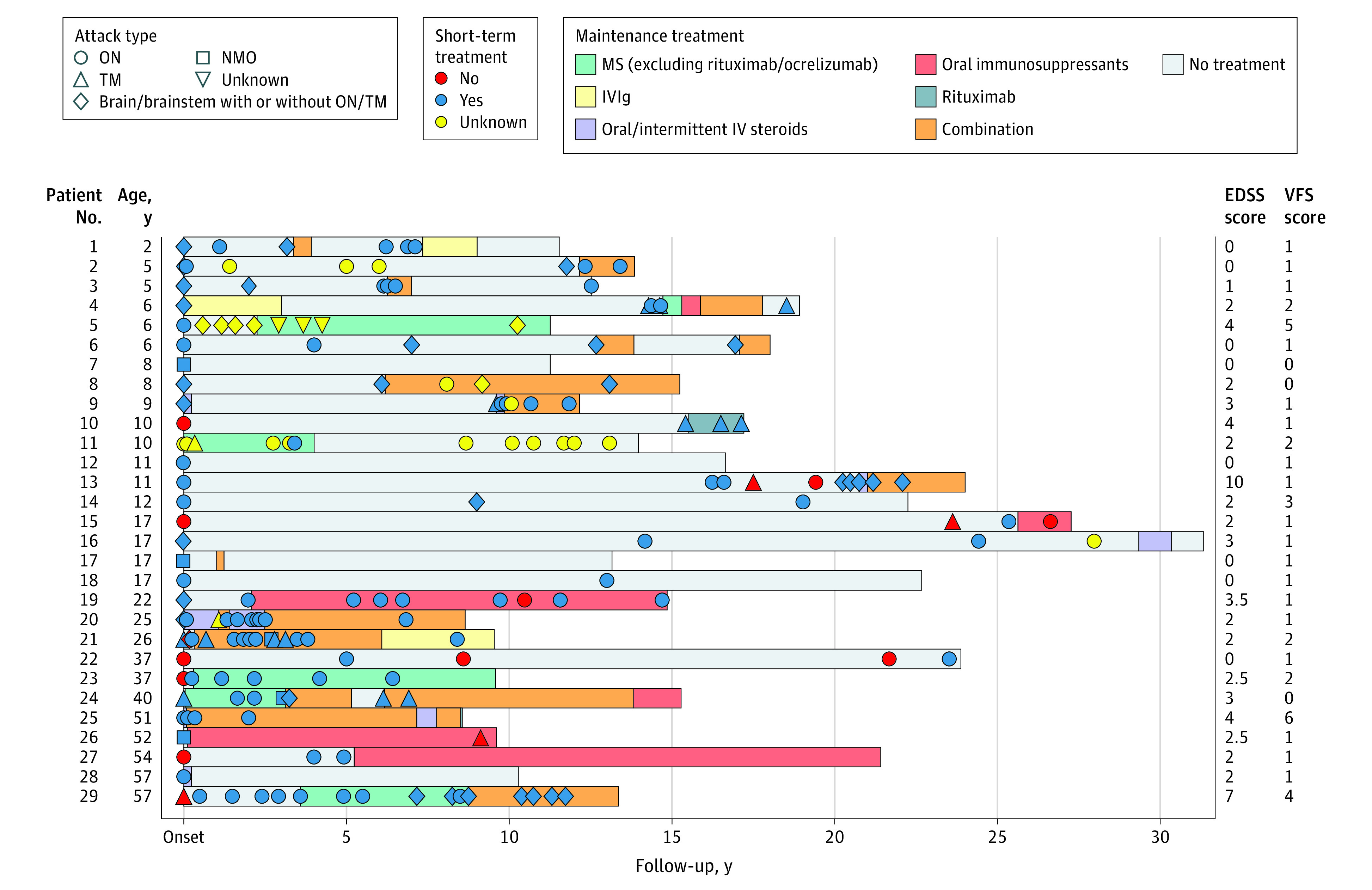Figure. Temporal Distribution and Types of Attacks, Treatments Used, and Disability at Last Follow-up for Each Patient.

Short-term treatments were undertaken within 6 weeks and included 1 or more of corticosteroids (oral/intravenous [IV]), intravenous immunoglobulin (IVIg), or plasma exchange. Maintenance treatments with multiple sclerosis (MS) medications included any current or prior approved MS medications except rituximab and ocrelizumab. Oral immunosuppressants included azathioprine, cyclophosphamide, methotrexate, or mycophenolate mofetil. Twenty-three patients received 1 or more maintenance attack-prevention treatments, including MS medications excluding rituximab/ocrelizumab (n = 6); IVIg (n = 3); oral/intermittent IV steroids (n = 5); rituximab (n = 1); oral immunosuppressants (n = 6); or a combination (n = 14). Of 14 patients who received combination treatment, the combinations included steroids and oral immunosuppressant, 13; steroids and rituximab, 5; steroids and IVIg, 4; rituximab and oral immunosuppressant, 1; and steroids and plasma exchange, 1. Triple combinations were also used: steroids, rituximab, and IVIg, 2; steroids, rituximab, and oral immunosuppressant, 1 (7%). EDSS indicates Expanded Disability Status Scale; NMO, neuromyelitis optica; ON, optic neuritis; TM, transverse myelitis; VFS, visual functional system.
